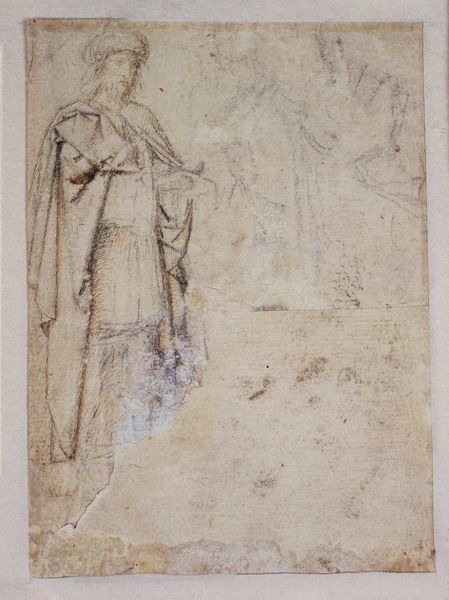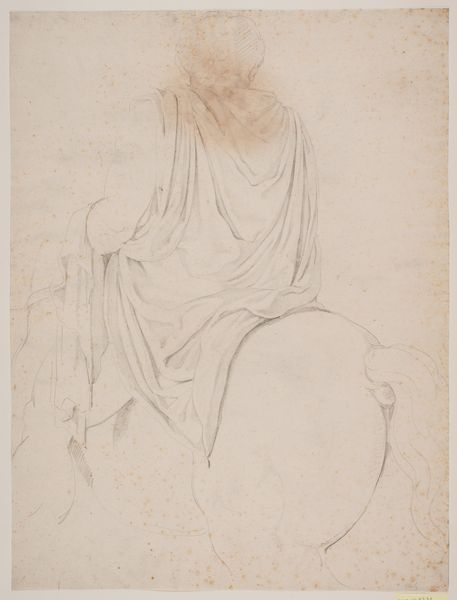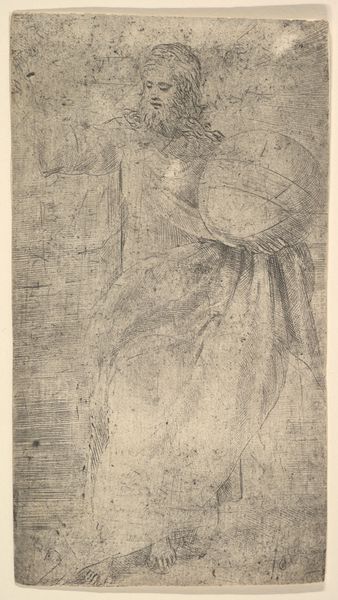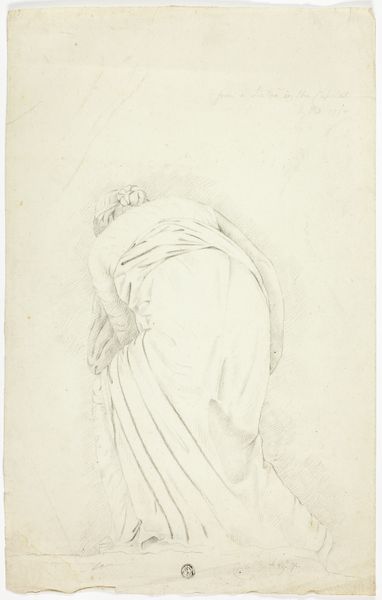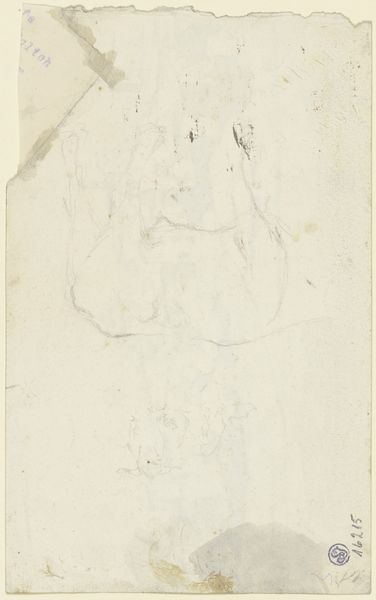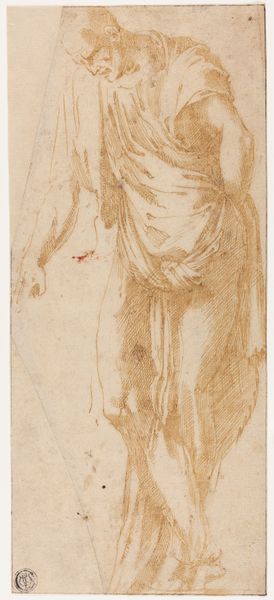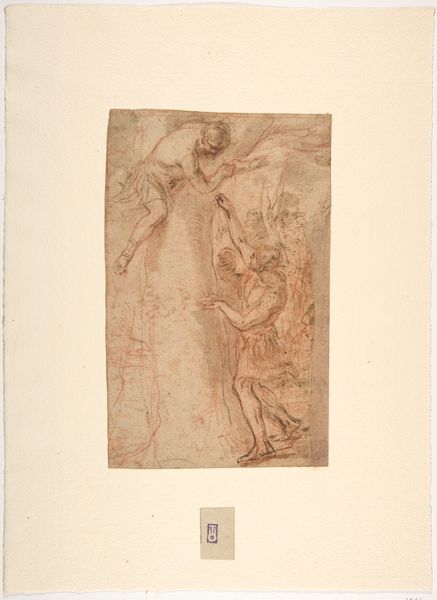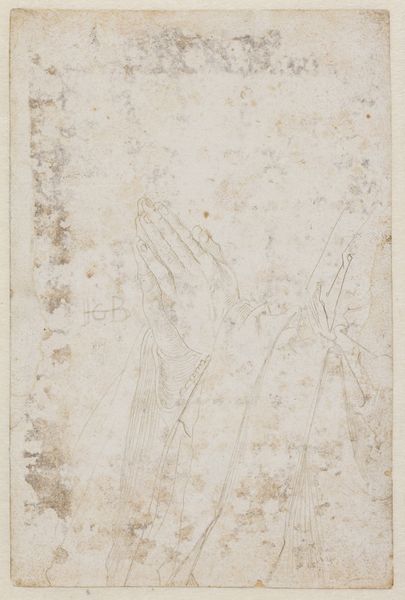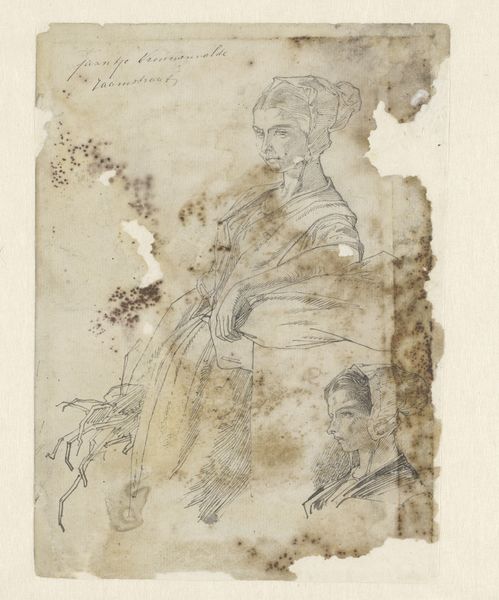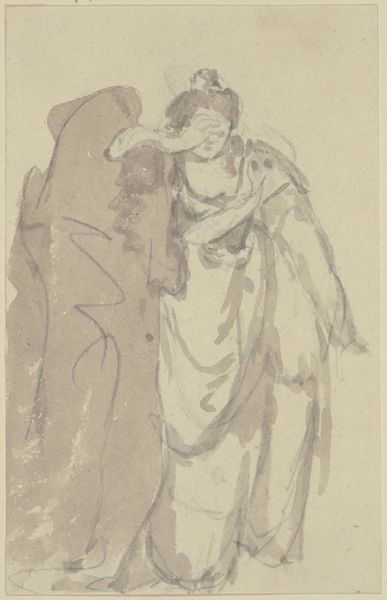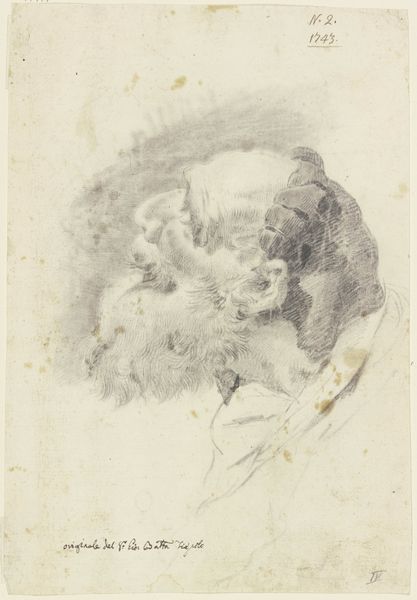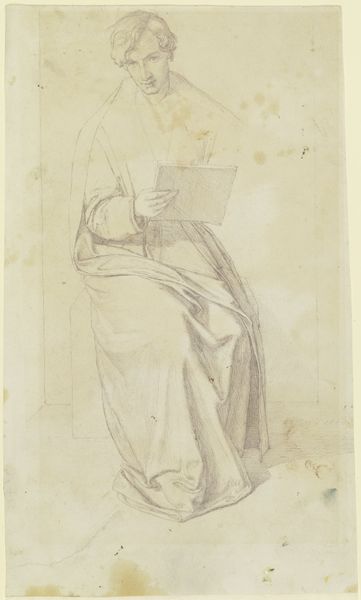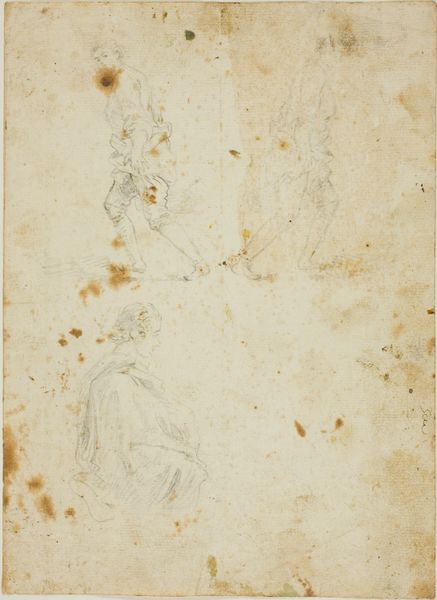
drawing, paper, watercolor, pencil
#
portrait
#
drawing
#
water colours
#
paper
#
watercolor
#
underpainting
#
romanticism
#
pencil
#
mixed media
Dimensions: 204 mm (height) x 138 mm (width) (bladmaal)
Editor: This mixed media work, "En apostelfigur eller lignende," from 1850 by Dankvart Dreyer, depicts a figure that does look like an apostle. It’s quite faint, and the rest of the image seems to show the ghosts of other sketches or watercolor underpaintings, which gives the impression of layers of history, maybe even spiritual presences. What visual symbols stand out to you? Curator: The most immediately striking thing is the figure itself. Notice how he is holding a staff and rendered in a fairly classical style, and with what appears to be great reverence and careful application. Given the artist, the date, and his probable inspiration within the golden age of Danish painting, does it suggest an echo of earlier depictions of prophets and holy figures? Editor: It does! There's almost a timelessness to his expression. How does the hazy quality play into that feeling? Curator: It speaks to memory. Consider the layering, and the faded quality; even the medium itself, the watercolors and pencil on paper, are so often used to record personal or historical narratives. Could these spectral sketches be other cultural symbols overlaid and lost? This ghostliness grants the central figure even greater prominence by imbuing it with memory. Editor: So, it is as if Dreyer’s drawing suggests the lingering power of symbols to shape our understanding across time? Curator: Exactly! Each of these barely-there images carries a piece of the cultural memory, but the clearest one guides us most directly. Think of them like palimpsests from different periods—all present at once but contributing varying levels of meaning. Editor: That’s fascinating. I initially saw a simple sketch, but now I’m thinking about how the past literally and figuratively informs the present in this drawing. Thank you. Curator: It works similarly for me. And hopefully, we can find modern relevance in historical artworks that we were maybe missing initially.
Comments
No comments
Be the first to comment and join the conversation on the ultimate creative platform.
